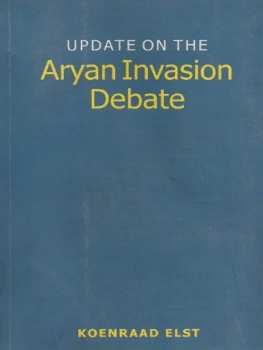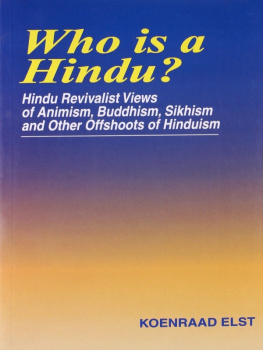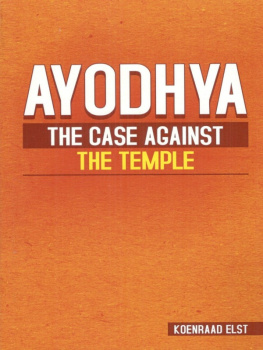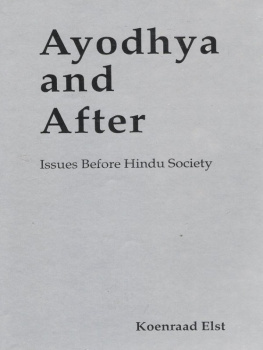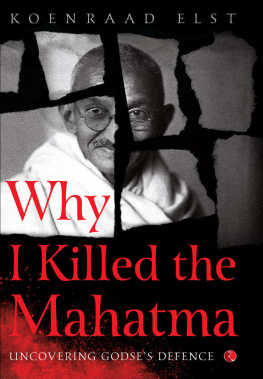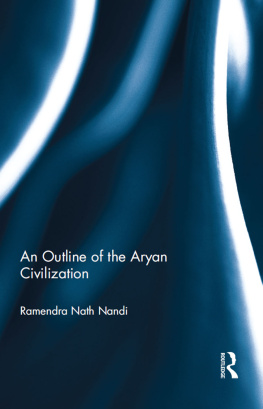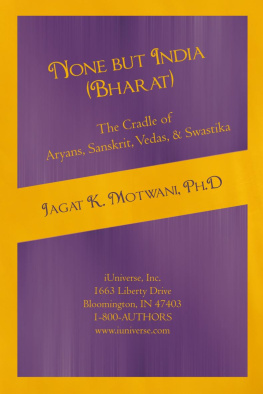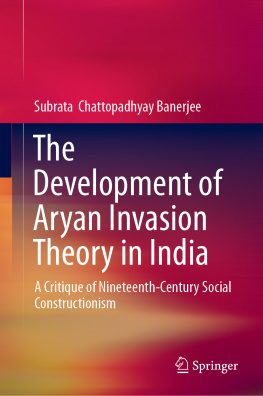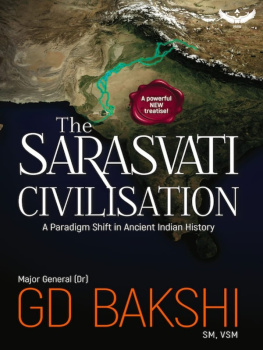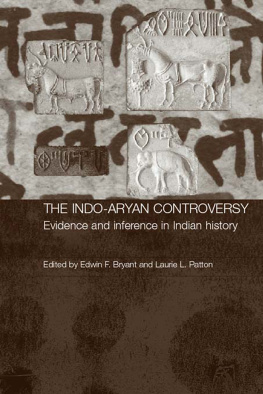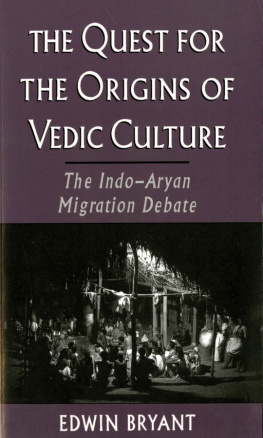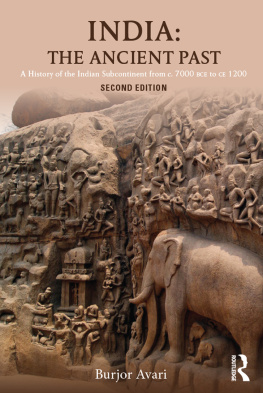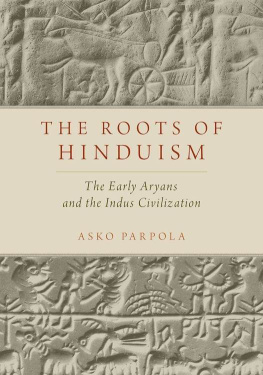1.1. POLITICIZING A LINGUISTIC THEORY
1. Political aspects of the Aryan invasion debate1.1. POLITICIZING A LINGUISTIC THEORY
1.1.1. Aryavarta for the Aryans
Until the mid-19th century, no Indian had ever heard of the notion that his ancestors could be Aryan invaders from Central Asia who had destroyed the native civilization and enslaved the native population. Neither had South-Indians ever dreamt that they were the rightful owners of the whole subcontinent, dispossessed by the Aryan invaders who had chased them from North India, turning it into Aryavarta, the land of the Aryans. Nor had the low-caste people heard that they were the original inhabitants of India, subdued by the Aryans and forced into the prisonhouse of caste which the conquerors imposed upon them as an early form of Apartheid. All these ideas had to be imported by European scholars and missionaries, who thought through the implications of the Aryan Invasion Theory (AM, the theory that the Indo-European (IE) language family had spread out from a given homeland, probably in Eastern Europe, and found a place in Western and Southern Europe and in India as cultural luggage of horse-borne invaders who subjugated the natives.
One of the first natives to interiorize these ideas was Jotirao Phule, Indias first modem Mahatma, a convent-educated low-caste leader from Maharashtra. In 1873, he set the tone for the political appropriation of the AIT: Recent researches have shown beyond a shadow of doubt that the Brahmins were not the Aborigines of India () Aryans came to India not as simple emigrants with peaceful intentions of colonization, but as conquerors. Ever since, the political reading of the AIT has become all-pervasive in Indian textbooks as well as in all kinds of divisive propaganda pitting high and low castes, North and South Indians, speakers of Indo-Aryan and of Dravidian languages, and tribals and non-tribals, against each other.
Today, out of indignation with the socially destructive implications of the politically appropriated AIT, many Indian scholars get excited about supposed imperialist motives distorting the views of the Western scholars who first introduced the AIT. They point to the Christian missionary commitment of early sankritists like Friedrich Max Mller, John Muir and Sir M. Monier-Williams and of dravidologists like Bishop Robert Caldwell and Reverend G.U. Pope, alleging that the missionaries justify their presence in India by claiming that Aryan Hinduism is as much a foreign import as Christianity. They quote Viceroy Lord Curzon as saying that the AIT is the furniture of Empire, and explain how the British colonisers justified their conquest by claiming that
About the use of the AIT in the service of colonialism, there can be no doubt. Thus, during the 1935 Parliament debates on the Government of India Act, Sir Winston Churchill opposed any policy tending towards decolonization on the following ground: .
However, it doesnt follow that the AIT was conceived with these political uses as its deliberate aim. The scholars concerned were children of their age, conditioned by prevalent perceptions and prejudices, but they sincerely believed that this theory explained the available data best.
1.1.2. Hitlers Aryans
Even the 19th-century race theories which would feature so dramatically in crimes against humanity in 1941-45 were not originally conceived as political ploys. In the prevailing Zeitgeist, most of their theorists genuinely thought that the race concept provided the best explanation for the incoming data of nascent sciences like sociology and anthropology. Nonetheless, the disruptive effects of their work have reached beyond Europe as far as India.
In the proliferating race theories of the late 19th and early 20th century, Aryan, an early synonym of Indo-European (IE), became a racial term designating the purest segment of the White race. Of course, the identification of white with Aryan was an innovation made by armchair theorizers in Europe, far from and in stark disregard for the self-described Aryas in India. Better-informed India-based Britons like Rudyard Kipling summed up the Indian type as Aryan brown.
Incorporated in the theme of Aryan whiteness, the AIT became a crown piece in Adolf Hitlers vision of white supremacy: here was the proof of both white superiority and of the need to preserve the race from admixture with inferior darker races. Had not the white Aryan invaders of India subdued the vastly more numerous brown-skinned natives, and had they not lost their superior white quality by mixing with the natives and becoming more brown themselves? In the Nazi view, the Aryan invaders had retained a relative superiority vis--vis the pure black natives by means of the caste system, but had been too slow in instituting this early form of Apartheid, so that their type was fatally contaminated with inferior blood.
The subjugation of the black natives of India by the white Aryan invaders was, in the Rassenkunde (racial science) courses in Nazi schools, the clearest illustration of the superiority of the white and especially the Aryan race.
1.1.3. Hindu and Aryan
The Aryan theme failed to kindle any sympathy in Hitler for the brown Aryans of India. He spurned the collaboration offer by freedom fighter and leftist Congress leader Subhash Chandra Bose because he preferred India to be under white British domination. And he ordered the extermination of the Gypsies, Indian immigrants into Europe. Nonetheless, anti-Hindu polemicists cleverly exploit the ambiguity of the term Aryan to associate Hindus with Hitler.

